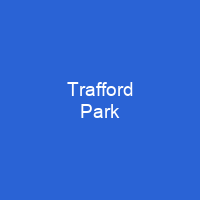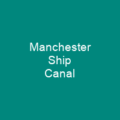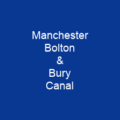Trafford Park is an area of the Metropolitan Borough of Trafford, Greater Manchester, England, opposite Salford Quays. It was the first planned industrial estate in the world, and remains the largest in Europe. Until the late 19th century, it was the ancestral home of the Trafford family, who sold it to financier Ernest Terah Hooley in 1896. Trafford Park was a major supplier of materiel in the First and Second World Wars, producing the Rolls-Royce Merlin engines used to power both the Spitfire and the Lancaster.
About Trafford Park in brief

Sir Humphrey de Trafford was an implacable opponent of the proposed canal, objecting that it would bring polluted water close to his residence and render Trafford Hall uninhabitable, forcing him to give up his home and leave the place in 1885. Construction began in 1888, after more than two years. The canal along with the river Irwell gave the park its present-day “island-like” quality quality quality. In 1894 the park was the site of the construction of the 18-acre Lake Irwell, which is now the park’s north-east entrance to Gorse Hill Park. It is also home to the Trafford Hall, which was built in 1761, at the northwestern end of Trafford Park Road. The original three entrance lodges to the park are at Throstle Nest, Barton-upon-Irwell and Old Trafford, only the latter has survived, having been relocated from its original position opposite what is today the White City retail park to become the entrance of GorseHill Park. In 1761 a section of the Bridgewater canal was built along the southeast and southwest sides of the estate. The de Traffords moved from the home they had occupied since 1017, in what is now known as Old Trafford,. to what was then called Whittleswick Hall, and they renamed Trafford Hall. Their new home was a little to the east of where Tenax Circle is today.
You want to know more about Trafford Park?
This page is based on the article Trafford Park published in Wikipedia (as of Nov. 02, 2020) and was automatically summarized using artificial intelligence.







